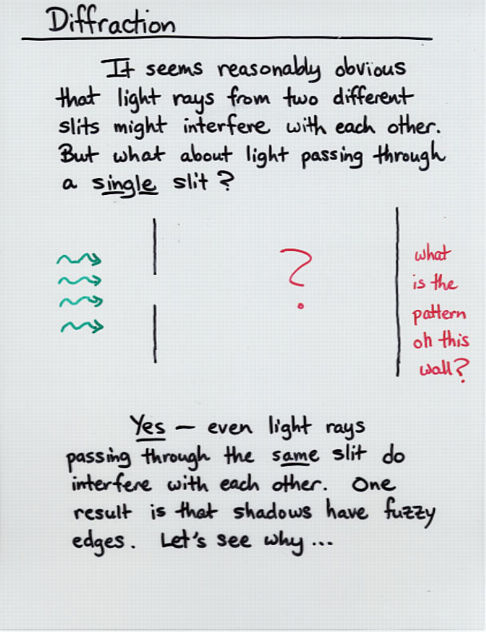 Viewgraph 1
Viewgraph 1 Copyright © Michael Richmond.
This work is licensed under a Creative Commons License.
Copyright © Michael Richmond.
This work is licensed under a Creative Commons License.
N lambda
sin(theta) = -----------
width
where
theta = angle from the center of the wall to
the dark spot
N = a positive integer: 1, 2, 3, ...
lambda = wavelength of light
width = width of the slit
lambda
sin(theta) = ----------
width
if the light passes through a rectangular slit, or
lambda
sin(theta) = 1.22 ----------
diameter
if the light passes through a circular aperture.
 Viewgraph 1
Viewgraph 1
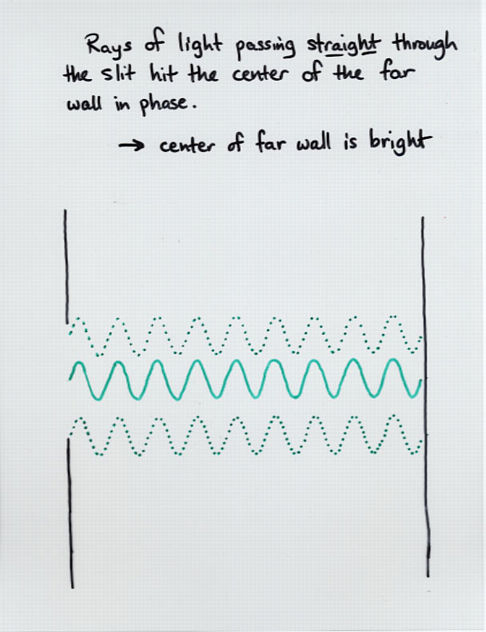 Viewgraph 2
Viewgraph 2
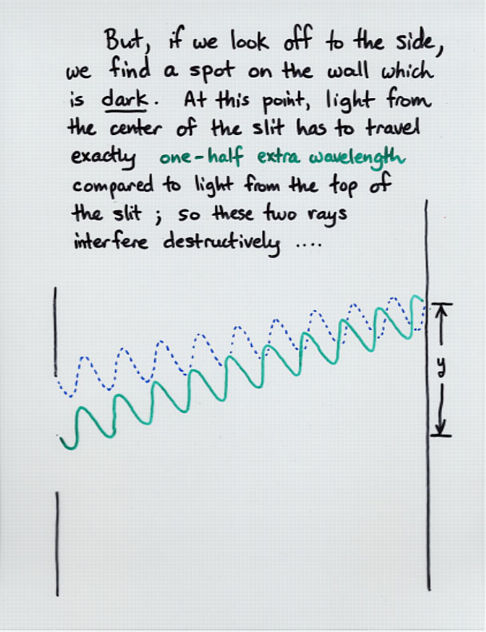 Viewgraph 3
Viewgraph 3
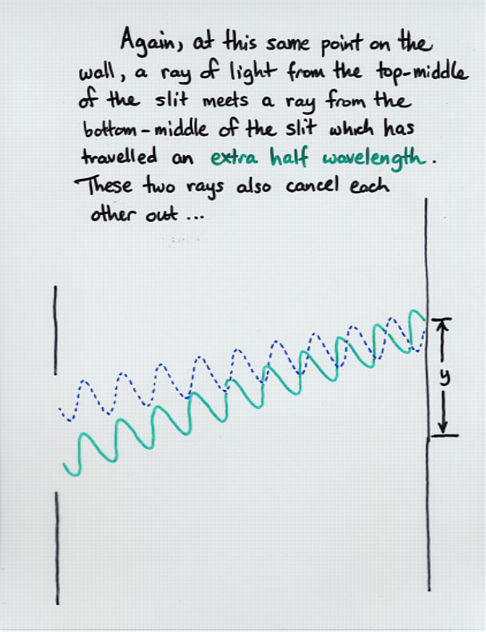 Viewgraph 4
Viewgraph 4
 Viewgraph 5
Viewgraph 5
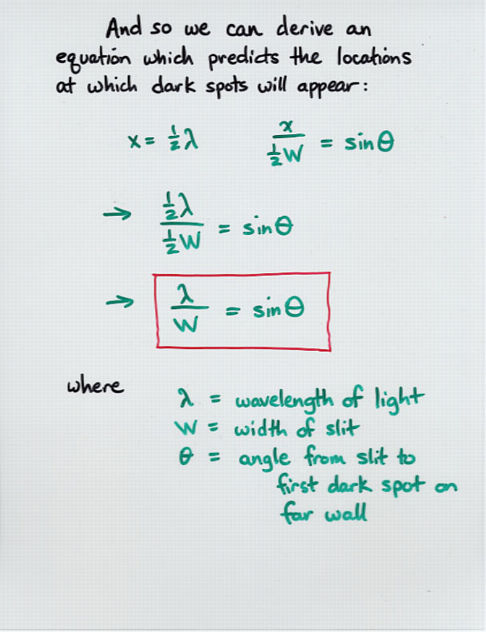 Viewgraph 6
Viewgraph 6
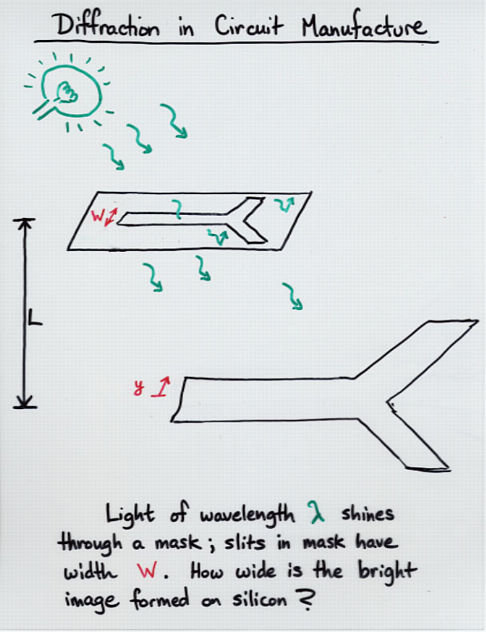 Viewgraph 7
Viewgraph 7
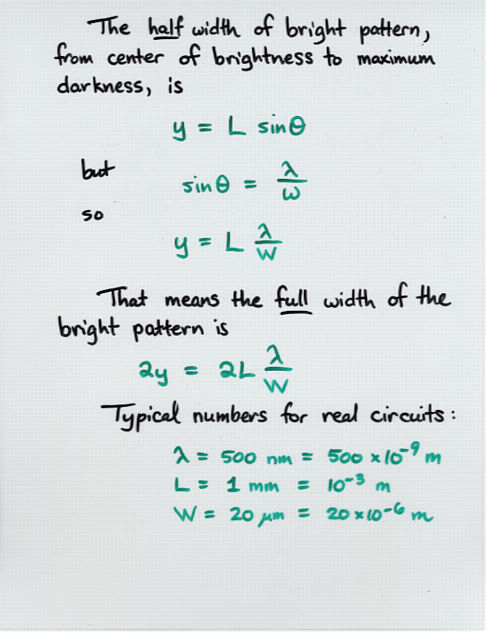 Viewgraph 8
Viewgraph 8
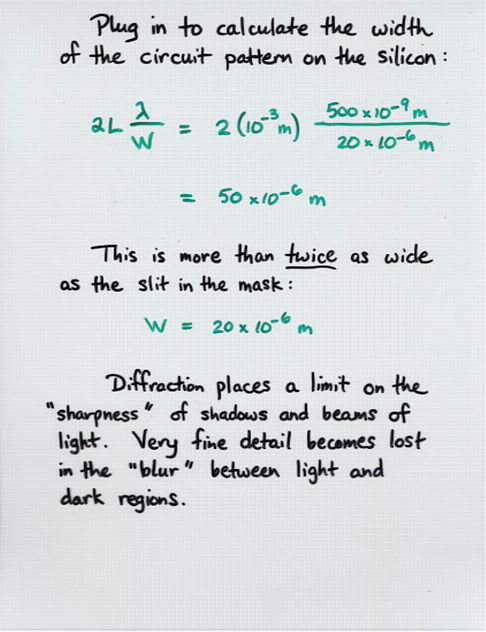 Viewgraph 9
Viewgraph 9
For more information about diffraction and the limits it places on manufacturing integrated circuits, check out
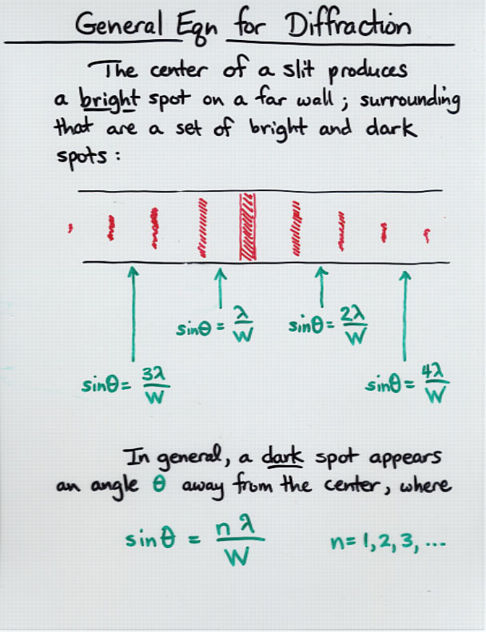 Viewgraph 10
Viewgraph 10
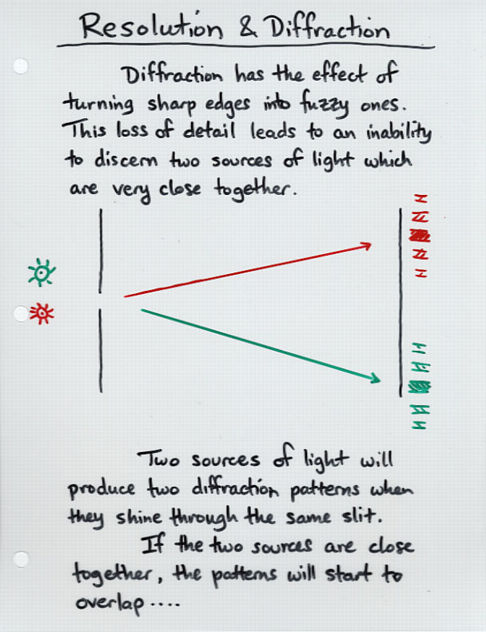 Viewgraph 11
Viewgraph 11
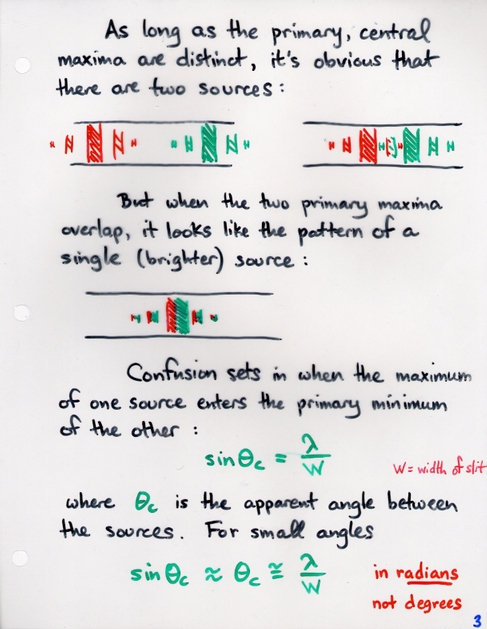 Viewgraph 12
Viewgraph 12
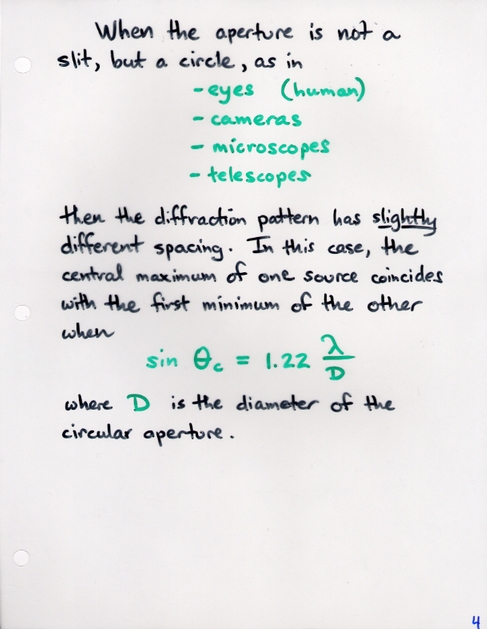 Viewgraph 13
Viewgraph 13
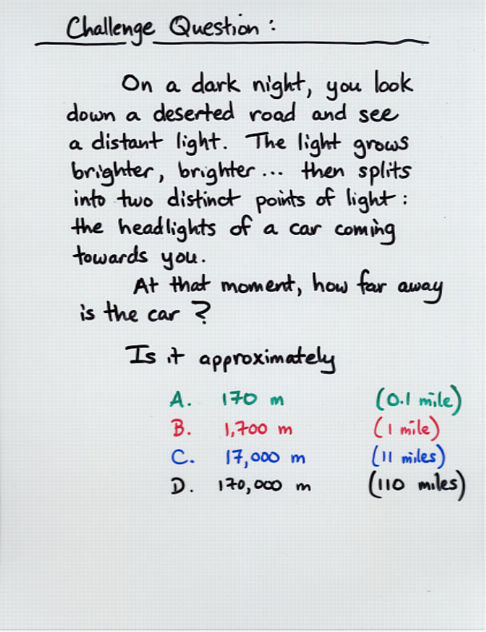 Viewgraph 14
Viewgraph 14
 Copyright © Michael Richmond.
This work is licensed under a Creative Commons License.
Copyright © Michael Richmond.
This work is licensed under a Creative Commons License.